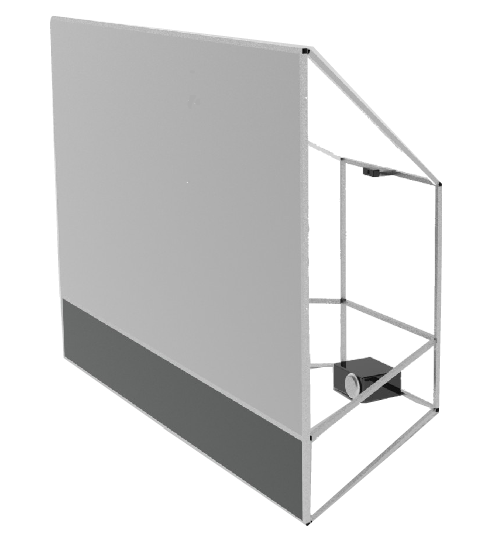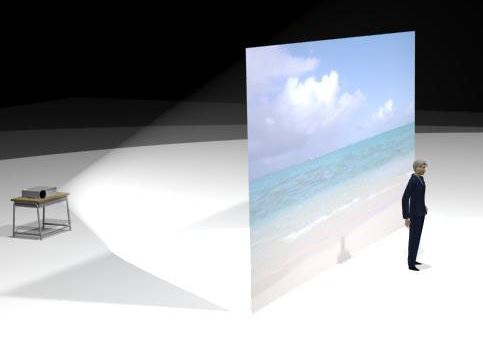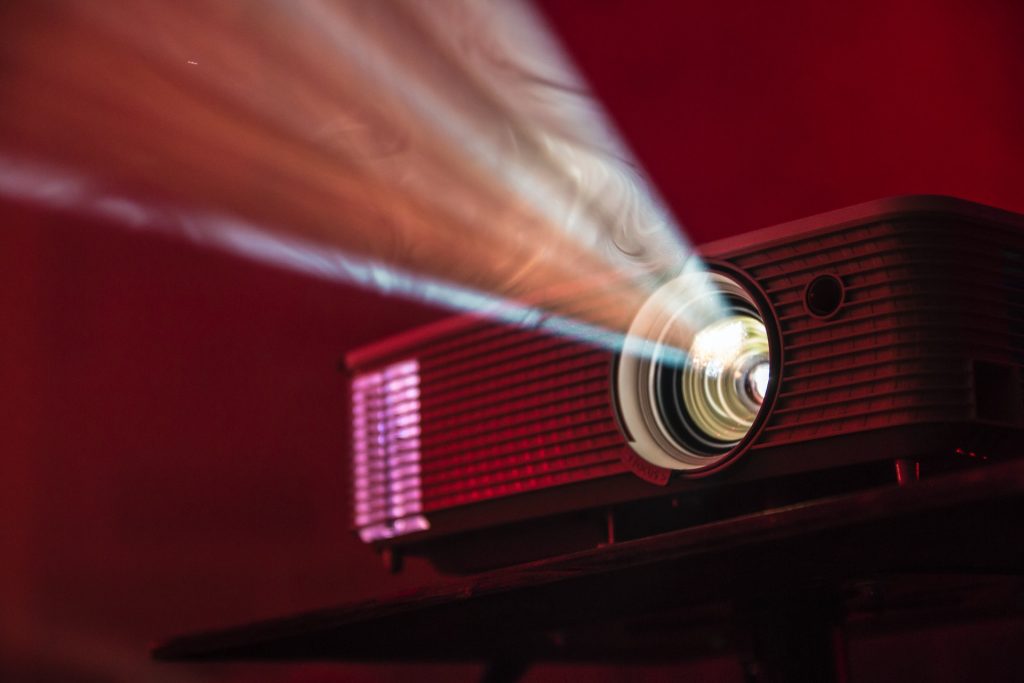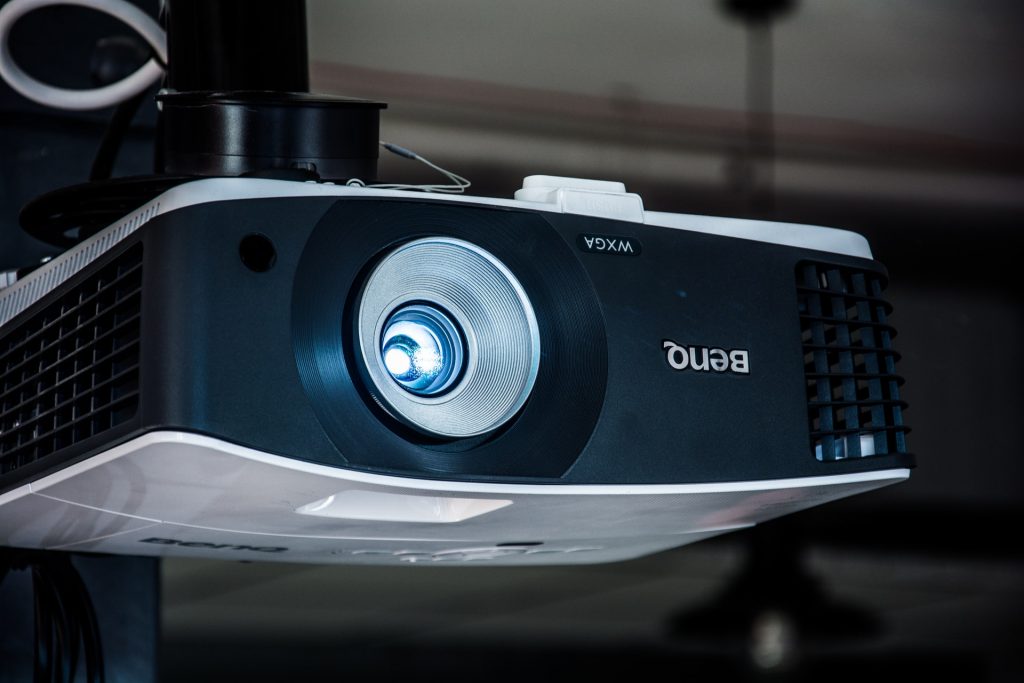Here is everything you need to know about a rear projection screen.
A rear projection screen is a great projector screen choice that takes your entertainment to a whole new level. Rear projection screens are packed with lots of benefits and they work differently from front projection screens.
This article is designed to help you understand everything you need to know about rear projection screens. You’ll get to understand the following concepts clearly after reading this article wholly:
- How a rear projection screen works
- Factors to consider before getting a rear projection screen
- Differences between a rear projection screen vs. a front projection screen
- Pros and cons of using a rear projection screen
You’ll also get additional information on the best projector type when using a rear projection screen.
Let’s get started!
How a Rear Projection Screen Works
First things first – let’s understand the basics of a rear projection screen first before diving in too deep. A rear projection screen displays images/videos from a projector. The projector is placed behind the projection screen
A rear projection screen allows light to pass through it, therefore, projecting images. In other words, this style of projection displays images similar to how televisions work.
It is important to note that this style of projection is highly beneficial and it is ideal for an array of applications as you’ll see later on in this article.
Differences Between a Rear Projection Screen vs. a Front Projection Screen
There are certainly more differences between rear projection screens vs. front projection screens apart from how they display images. In other words, the primary difference between a rear vs. front projection screen is how they handle light.

The differences can be put into six basic categories. Check them out:
Image Quality
Front projection screens require brighter projectors for rooms with a lot of ambient light. On the other hand, a rear projection screen delivers crisp and clear images regardless of whether rooms have bright ambient light.
In other words, both projection screens will offer decent image quality. It all depends on the quality of the projection screen’s fabric and the projector itself.
Tip:
A good rule of thumb when shopping for projectors is to understand that projectors producing more ANSI lumens are expensive. In other words, the higher the ANSI lumen count, the more expensive the projector.
Warning:
It would be best if you’d consider using a brighter projector in rooms with bright ambient light. Using projectors that produce low ANSI lumens in a room with a lot of ambient light will certainly display washed-out images.
Portability
Some front projection screens are portable while others are not. However, rear projector screens are not portable. In addition, they do require more physical space so that the projector can display images correctly on the projection screen.
Ambient Light
Having a rear projector screen helps you handle ambient light better than a front projection screen. Ambient light enhances your rear projection screen image display produced by the projector.
Space
It is important to note that using a rear projection screen requires physical space to get the correct setup. Unlike front projection screens, rear projection screens cannot sit against walls because the projector needs to be behind the screen.

Viewing Angles
A good rule of thumb when discussing projection screen viewing angles is that higher screen gains have narrower optimal viewing angles.
A front projection screen has better viewing angles compared to a rear projection screen. This fact is evidently clear when considering where a large audience will sit relative to the viewing surface.
In other words, a rear projector screen has a narrower optimal viewing angle for larger audiences. People sitting in areas outside the optimal viewing angle will not enjoy watching clear and crisp images. The viewing angle impacts brightness.
Brightness
When selecting between using a front vs. rear projection screen, it would be best to put brightness into consideration. However, brightness is significantly influenced by where you’d like to set up your entertainment equipment (projector & projection screen).
It would be best to use a front projection screen for dark home theaters. In contrast, consider using a rear projection screen for outdoor settings.
Warning:
Before using your projector in an outdoor setting, please ensure that all connections are correctly done. You should additionally ensure that the weather is clear as water can cause irreversible damage to your projector.
Pros and Cons of Using a Rear Projection Screen
There are lots of benefits associated with using a rear projection screen. However, rear projection screens also have a fair share of downsides. Let’s check them out.
Pros of Using a Rear Projection Screen
There are four primary pros of using a rear projection screen. Check them out:
- Unlike front projection screens, the projector does not have to be placed behind or within the audience. It is, therefore, advantageous as it does away with setting up a dedicated space within the audience.
It also does away with the speaker (say in a keynote speech) blocking the rays of light being projected by a front display projector.
- Rear projection screens offer superior image projection quality – more than front projector screens. This fact is unquestionably backed by how ambient light enhances the projection of images on a rear projection screen.
- Using a rear projection screen is also economical and efficient. You do not need to have a bright projector because the projector is not placed too far behind the screen. In addition, ambient light helps enhance clear image display.
It is important to note that brighter projectors are expensive and require more electrical power to run.
- Using a rear projector screen is additionally beneficial as it does away with projector fan noise. Sitting near a projector can prove to be a distraction especially if its cooling fan is loud enough for you to hear it.
Cons of Using a Rear Projection Screen
There are two primary downsides to using rear projection screens. Check them out:
- Rear projection screens require projectors with short-throw lens because the projector needs to be close to the projection screen.
Using a short-throw lens can be disadvantageous if the projection screen reflects a significant amount of light to the projector. Loss of brightness means that your audience will not be able to enjoy viewing bright images.
- A rear projection screen is not ideal for large audiences that require a wide viewing angle. A good number of people will not be able to clearly view images because they are outside the optimal viewing angle.
Remember, higher screen gains mean narrower optimal viewing angles which negatively impact brightness.
The following table is a summary of the above information:
Pros
Cons
Factors to Consider Before Getting a Rear Projection Screen
There are two primary factors that you’ll certainly need to consider before getting a rear projection screen:
- Space – as you’ve read at the beginning of this article, a rear projection setup requires adequate space. The projection screen cannot lie against the wall like how a front projection screen does.
Consider using a rear projection screen together with a short throw projector if you have a small entertainment room, e.g. home theater.
- Audience viewing angle – Some bigger audience sizes may require a wide viewing angle which is not ideal for rear projection screens. Remember, a rear projection screen has a slight optimal angle before screen gain decreases.
Does a Rear Projection Screen Require a Special Projector?
No. You do not need a special projector to project images on a rear projection screen. Modern projectors can flip images which enables you to enjoy your entertainment regardless of whether you have a front or rear projection screen.
Final Thoughts
A rear projection screen is indeed good as its benefits outweigh its demerits. Rear projection screens will certainly enable you to enjoy your entertainment by displaying clear crisp images. They, however, require space to set up the entertainment equipment.
Remember, it would be best if you’d get a projector with a short-throw lens. It would also be best if you’d consider your audience’s viewing angles. The wider the viewing angle the less vivid the image projection is going to be because brightness decreases.
Here’s the deal:
Consider following the guidelines outlined in this article before acquiring a rear projection screen. You can always reach out to us for more information on rear projection screens or any other projector-related in general.



